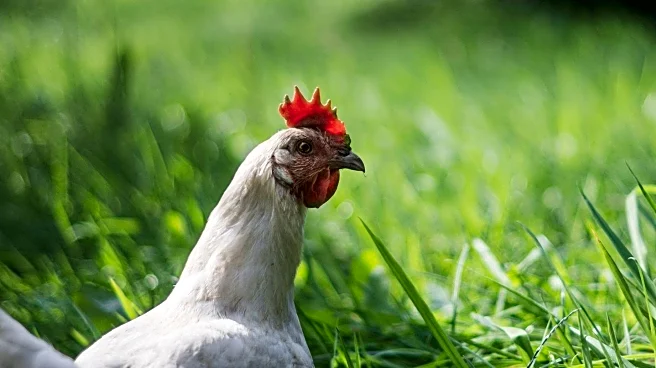What's Happening?
A study has assessed the depletion, metabolism, and health risks of clopidol residues in broiler chickens. Clopidol, an anticoccidial drug, was found to accumulate primarily in the liver and kidneys, with
initial concentrations of 28.81 mg/kg and 29.22 mg/kg, respectively. Residue levels decreased significantly within days, falling below the limit of quantification by day three. The study also identified metabolites in tissue samples, with the highest concentration in the kidney. Health risk assessments indicated that clopidol consumption through chicken meat poses no significant threat, with hazard quotient values below one for all age groups and consumption levels.
Why It's Important?
Understanding clopidol residue patterns is crucial for food safety and public health. The study provides valuable data for regulatory bodies to establish safe consumption levels and manage risks associated with veterinary drug residues in food. Ensuring that clopidol levels remain within safe limits protects consumers from potential adverse health effects. The findings contribute to the broader effort to maintain food quality standards and safeguard public health, particularly in regions with high poultry consumption.
What's Next?
Further research may focus on refining detection methods for clopidol residues and exploring the environmental impact of non-extractable residues. Regulatory agencies might use the study's findings to update guidelines and ensure compliance with international standards. Continued monitoring of veterinary drug residues in food products will be essential to prevent potential health risks and maintain consumer confidence.
Beyond the Headlines
The study highlights the complexity of managing veterinary drug residues in food production. It underscores the importance of robust analytical methods and international collaboration to ensure food safety. Ethical considerations arise regarding the balance between agricultural productivity and consumer health. Long-term efforts may involve developing alternative methods to control poultry diseases without relying on chemical treatments.











